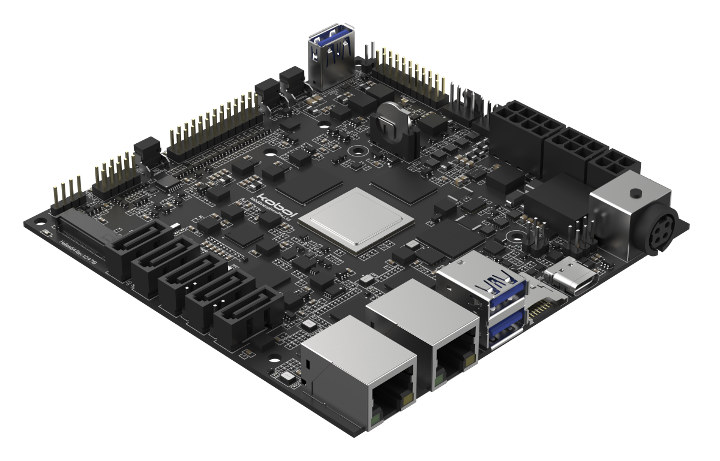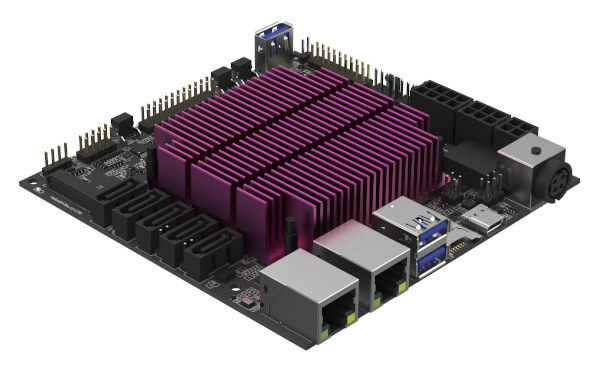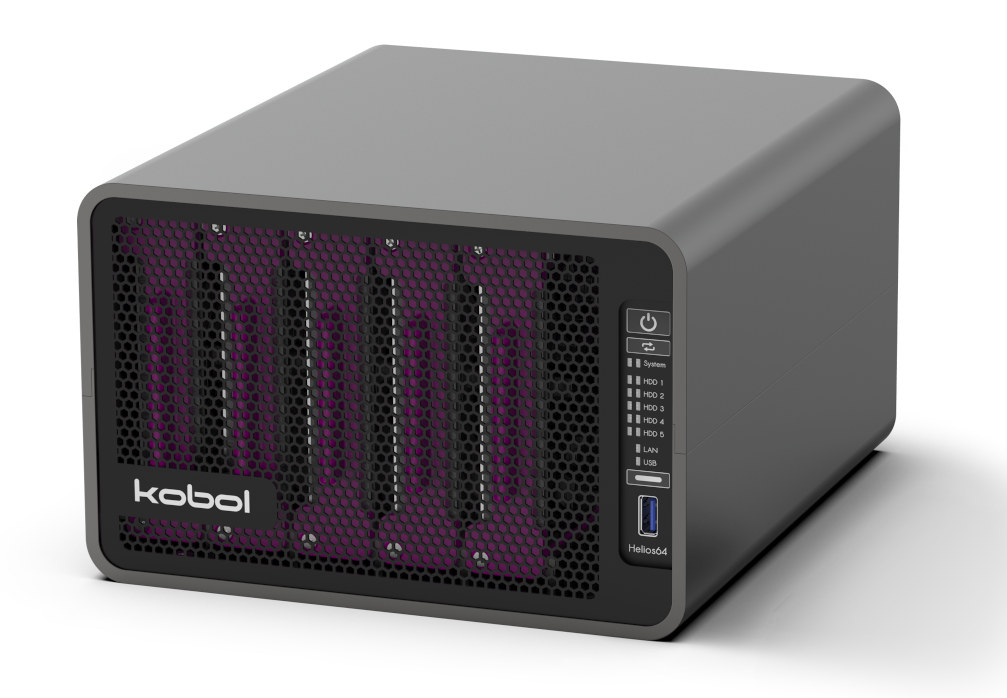We covered Rockchip RK3399K processor a few months ago, as a version of RK3399 processor qualified to run at 2.0 GHz, or supporting a wider-temperature range (-20 to +85°C) at 1.8 GHz.
We found out about the new processor, as Kobol was working on a Helios64 SBC designed for NAS that featured RK3399K SoC. At the time, we just had a drawing of the board and some specifications, but now the company has announced pre-orders for the board and a complete 5-bay NAS kit will start next week and the actual shipping start in March.
Kobol Helios64 SBC

Specifications:
- SoC – Rockchip RK3399K hexa-core processor with 2x Arm Cortex-A72 cores @ 2.0 GHz, 4x Cortex-A53 cores @ 1.6 GHz
- System Memory – 4GB LPDDR4
- Storage – 16GB eMMC 5.1 flash, 5x SATA 3.0, 1x M.2 SATA slot shared with one SATA 3.0 port, MicroSD port
- Connectivity – 1x 2.5GbE port, 1x Gigabit Ethernet port
- USB – 3x USB 3.0 ports, 1x USB Type-C port with DP (DisplayPort) and DAS (Direct Access Storage) modes
- Expansion – Headers for I2C, UART, SPI, GPIOs…
- Misc – 2x PWM fan headers, RTC with backup battery, buzzer
- Power Supply – Dual DC inputs, built-in UPS support with optional battery.
- Dimensions – 120 x 120 mm (nano-ITX form factor)
 The board will ships with a large heatsink as shown above. There’s no mention of OS support in the currently empty Wiki, but we should expect Debian and Armbian support.
The board will ships with a large heatsink as shown above. There’s no mention of OS support in the currently empty Wiki, but we should expect Debian and Armbian support.
Kobol Helios64 5-Bay NAS Enclosure
Kobol’s first product, Helios4 NAS SBC, would optionally ship with an acrylic enclosure which kept cost low, but it was not necessarily the most eye-pleasing design.

So the company has come up with a much nicer design for Kobol Helios64 enclosure as shown above.
Key features:
- Support for up to 5x 3.5” SATA HDD
- Hot-Plug HDD Tray System
- Integrated Control Panel
- 1x USB 3.0 Port
- 2x 80mm PWM Fans
- Dimensions – H 134mm x W 222mm x D 250mm
All necessary cables as included with the case.
The company also plans to offer an adapter kit to install Helios64 SBC in any mini-ITX tower to recycle old PC cases.
Pricing
Prices for the board, enclosure, accessories, and complete kit are as follows:
- Helios64 SBC with heatsink – $189
- Helios64 enclosure – $95
- 12V/10A Power Adapter – $14
- UPS battery pack comprised of Panasonic Cell NCR18650BD – $12
- Helios64 Full Kit with all four items above – $295 – Pre-order price: $285 until March 2020
Via LinuxGizmos

Jean-Luc started CNX Software in 2010 as a part-time endeavor, before quitting his job as a software engineering manager, and starting to write daily news, and reviews full time later in 2011.
Support CNX Software! Donate via cryptocurrencies, become a Patron on Patreon, or purchase goods on Amazon or Aliexpress




